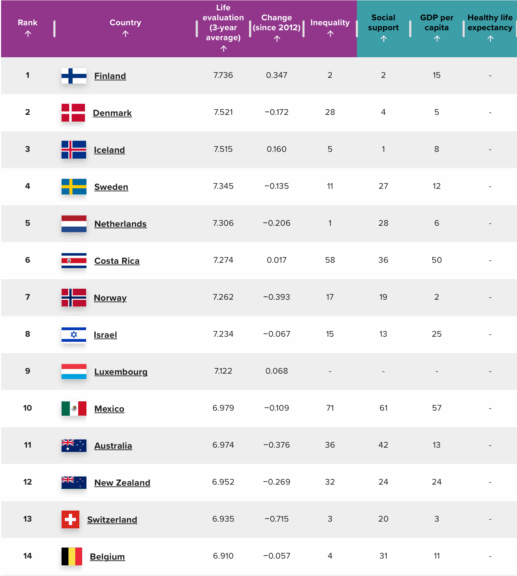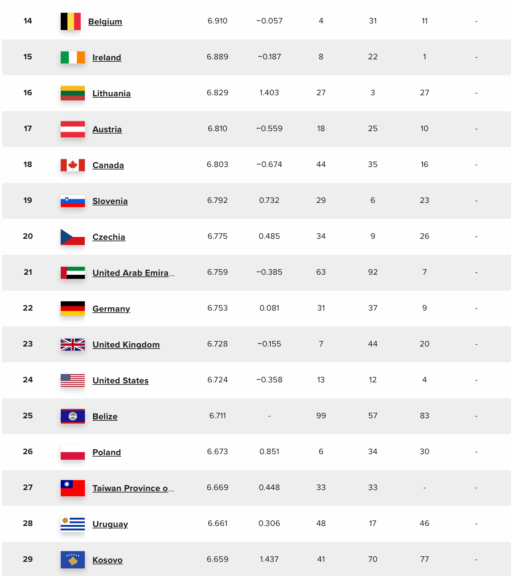This post contains the full PDF file of the 2025 World Happiness Report. It will follow an introduction to the focus of this year’s report. After the PDF, we’ll look at the country rankings in terms of the happiness of citizens in each country.
Where do you think the United States will rank this year? Will the Scandinavian countries hold onto the top spots?
Caring and Sharing = Happiness
In this year’s issue, they focus on the impact of caring and sharing on people’s happiness. Like ‘mercy’ in Shakespeare’s Merchant of Venice, caring is “twice-blessed” – it blesses those who give and those who receive. In this report, they investigate both of these effects: the benefits to the recipients of caring behaviour and the benefits to those who care for others. There is a wealth of evidence about the extent of caring behaviour around the world.
In the Gallup World Poll, people are asked if, in the last month, they gave money to charity, if they volunteered, and if they helped a stranger. They were also asked, in 2019, if they think other people would help them by returning their lost wallet.
Some key findings jump out of the data. First, people are much too pessimistic about the benevolence (willingness to do good, kindness) of others. For example, when wallets were dropped in the street by researchers, the proportion of returned wallets was far higher than people expected. This is hugely encouraging.
‘Benevolence Bump’
Second, our wellbeing depends on our perceptions of others’ benevolence, as well as their actual benevolence. Since we underestimate the kindness of others, our wellbeing can be improved by receiving information about their true benevolence (see Chapter 5).
Third, when society is more benevolent, the people who benefit most are those who are least happy. As a result, happiness is more equally distributed in countries with higher levels of expected benevolence (see Chapter 2).
Finally, benevolence increased during COVID-19 in every region of the world. People needed more help and others responded.
This ‘benevolence bump’ has been sustained since then. Despite a fall from 2023 to 2024, benevolent acts are still about 10% above their pre-pandemic levels (see Chapter 2).
Benevolence also brings benefits to those doing the caring and sharing. This works best if the motivation is to help others (rather than to feel good yourself), if the act is voluntary, and if it has an obvious positive impact on the beneficiary.
All this is shown in Chapter 2, where the usual country rankings of happiness are supplemented by rankings for benevolent acts and expected wallet return.
2025 World Happiness Report (Full report)
2025 World Happiness Report: Country rankings
The chart was extensive and included many ranking factors. Too many for us to include results for every country in this post. Instead, you’ll see the results for the country in the top spot down to a few spots below the United States on the list. If you’d like, you can view the entire chart here.


Credit: Helliwell, J. F., Layard, R., Sachs, J. D., De Neve, J.-E., Aknin, L. B., & Wang, S. (Eds.). (2025). World Happiness Report 2025. University of Oxford: Wellbeing Research Centre.




